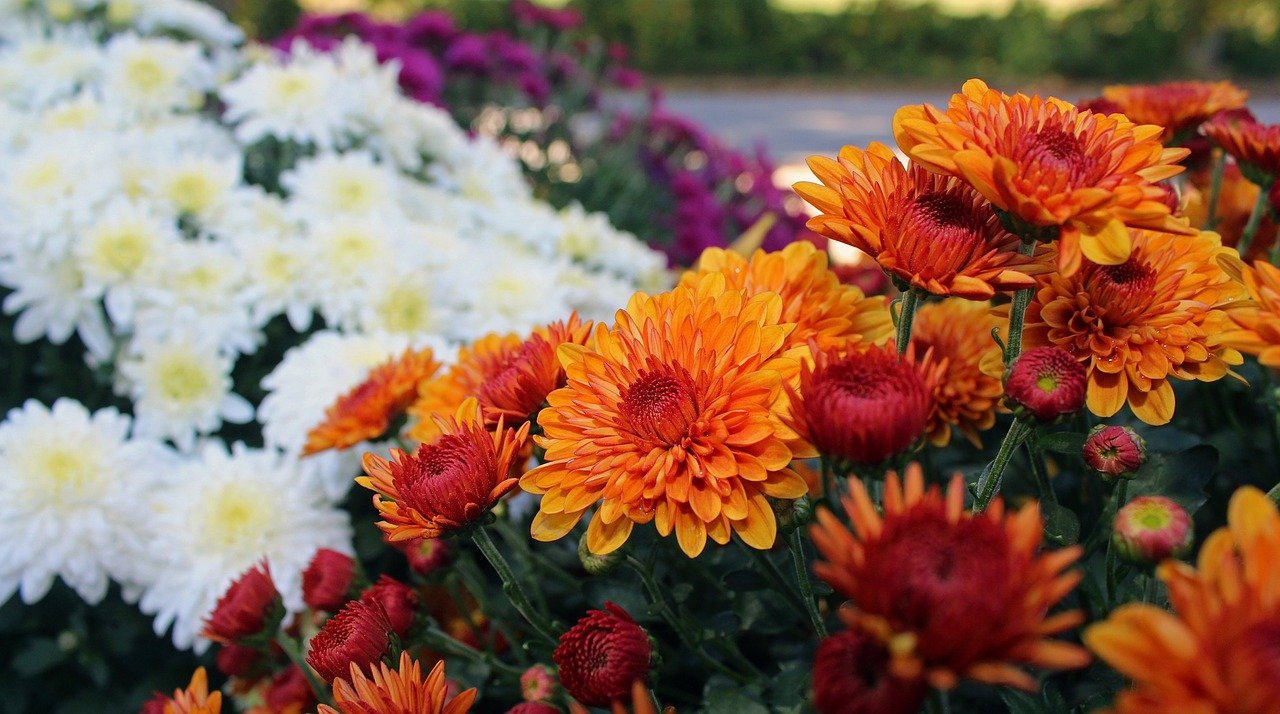If you’re cautious with when to transplant hardy mums, you can do so when the plant becomes woody. This can happen every two years, where the mums are less productive, and you can transplant them in early spring. You can also transplant the plants when they reach 8 inches in height or repot them when they are actively growing in fall or even do a second transplanting in spring when they become rootbound.
Regardless, it’s not surprising that many gardeners want to have these perennials. They are relatively easy to grow, and mums’ propagation is not even complicated for the newbie. However, transplanting can be tricky, so you can always start your mums in the greenhouse to create vigorous transplants.

When To Transplant Hardy Mums And Tips For Success
There are three instances where you can transplant hardy mums. The emphasis is necessary on the word hardy because transplanting mums that aren’t vigorous enough will struggle growing or even survive. A useful tip for growing hardy mums is starting plants in the greenhouse, regardless of your propagation method.
You can control the greenhouse to ensure the ideal growing environment for the mums in their vulnerable period, which helps them get healthy and withstand the conditions outdoors later on. You can then gently get your mums accustomed to the weather outside, and once they harden, you can transplant during these periods.
When they turn woody
You can transplant hardy mums when they turn woody. The beauty with these perennials is that one can still make use of them after they finished blooming. Chrysanthemums will eventually become woody in the center after about two or three years and become less productive.
This is a perfect opportunity to divide your mums, which will help promote flowering and control overcrowding. Divide the plants in early spring when new growth appears and then remove all the dead parts. You can then transplant the divisions, but not those having more woody parts.
When they reach 8 inches in height after from sowing
Another excellent time to transplant hardy mums is when they’re around 6 to 8 inches tall after germination. Again, you want them to be strong enough to transplant, so other than the height and true leaves, check your plants’ condition before transplanting. Sowing mum seeds is relatively exciting and straightforward as you don’t know what bloom you’ll get.
But since mums have a long growing season, you want to start them in the greenhouse. Sow six to eight weeks before your last frost date, which you can check from your area’s hardiness zone. You can then transplant the mums when they are around 8 inches tall.
Spring or autumn
If you want to repot mums, you can do so in fall while they’re still actively growing. If you have plants that risk getting rootbound, you can also repot chrysanthemums for the second time in spring. The latter is best if you notice your mums growing fast and losing adequate space for their roots.
How To Transplant Hardy Mums
Preparation
Once you learned the ideal times to transplant mums, your next consideration for successful transplanting is how to transplant itself. Chrysanthemums are generally hardy, so following the recommendations will be the only factor affecting their survival after transplanting. Start by choosing an area that receives 6 hours of sunlight daily and incorporate compost to the soil to improve its drainage and fertility.
Planting
Remember to be gentle, especially if you’re dividing the mums. For example, a clump of chrysanthemum can have three to four plants, which you can divide using your hands. The hole for transplanting should be twice as wide as your plant’s roots to accommodate its growth and then spread the roots before setting the mum in the hole.
You want the crown to be at the soil level after you pack soil around the roots. Mums can grow well at 24 inches apart with an inch of water after you’ve transplanted them. What about repotting?
Repotting
Turn the pot upside down so you can gently get the mum out of it. Place the plant in the new pot with a potting mixture. You want to have the root ball an inch below the pot’s rim and then put it in an area out of direct sunlight.
After you’ve finished transplanting, you may need to do additional practices. For example, if you plant in summer, mums will need pinching out to encourage fall bloom. On the contrary, those grown in fall will eventually be ready to bloom without pinching.
Conclusion
Starting chrysanthemums in the greenhouse ensure hardy plants for transplanting. But do you know when to transplant hardy mums for success? Three instances make good times for transplanting.
First is when you divide woody mums after two years; second is when your mums reach 8 inches tall after you sow them, and lastly, it is in autumn or spring for repotting. Those who want to prevent their mums from being rootbound will benefit well from repotting in spring. However, timing is only the first factor to overcome when transplanting.
Ensure that the area is well-prepared for the mums, and you have hardened them off before transplanting. Nonetheless, it’s best to start them indoors to be vigorous enough and withstand unpredictable outdoor conditions.
